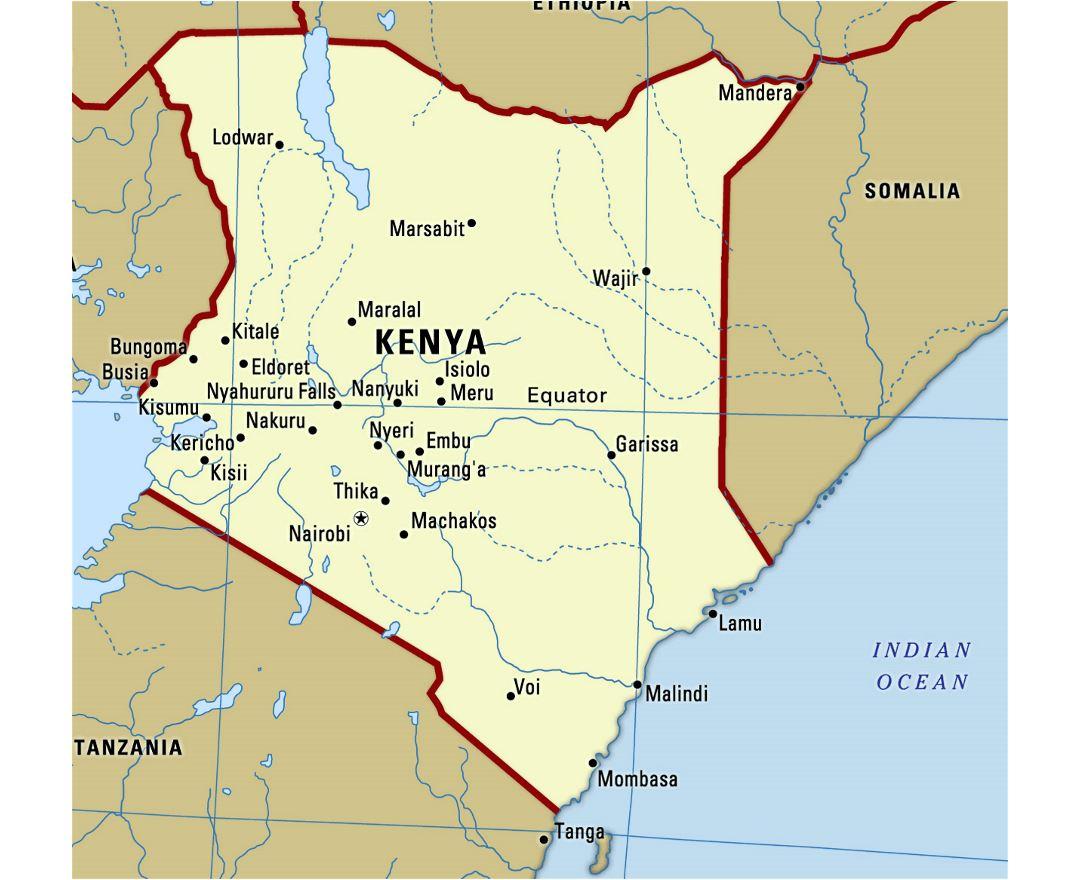The Equator is an imaginary line that runs around the center of the Earth at 0 degrees latitude, dividing the globe into the Northern and Southern Hemispheres. This unique geographic feature has fascinated travellers and scientists alike for centuries. When the sun is directly above the Equator, typically around March 20 and September 23 (the Equinoxes), the days and nights are equal in length, a phenomenon that occurs nowhere else on the planet. What makes the Equator even more interesting is that the Earth's spin speed is fastest here, at about 1,670 kilometres per hour!
In Kenya, the Equator divides the country into almost two equal halves, and its strategic location makes it a notable tourist attraction. Visitors flock to various equator markers to witness fascinating demonstrations of the Coriolis effect—a visual representation of the Earth's rotation—and to experience standing on both hemispheres simultaneously. The most prominent equator markers in Kenya can be found in Nanyuki, Timboroa, and Maseno, offering visitors unique and engaging experiences.
Why the Equator is a Tourist Attraction
Kenya's equator markers are popular tourist attractions for several reasons. First, they allow visitors to witness the Coriolis effect, where water spins in different directions depending on whether it's in the northern or southern hemisphere. These demonstrations offer a hands-on experience of the Earth's rotation in action.
Second, standing on the Equator gives travellers a unique geographical experience—one that can only be enjoyed in select parts of the world. It's also a great opportunity for taking photos and learning about geography in a fun, engaging way.
Additionally, the equator markers in Kenya are often surrounded by scenic landscapes, cultural landmarks, and other attractions, making them perfect stops on a road trip or a day tour. Let's explore some of the most popular equator spots in Kenya.
Top Equator Spots in Kenya
1. Nanyuki Equator Point
Nanyuki is perhaps the most famous equator marker in Kenya. Located in this vibrant town on the way to Mount Kenya and Ol Pejeta Conservancy, this spot is a favorite for travellers. Here, local guides demonstrate the Coriolis effect using simple water experiments, showing how water spins in opposite directions depending on which hemisphere you're in. Visitors can also explore the local Maasai crafts markets and enjoy stunning views of Mount Kenya. It’s an ideal stopover for those heading to the national parks and conservancies in the area.
2. Equator Crossing at Timboroa
This equator marker is located along the Nakuru-Eldoret highway, offering a more rural and serene experience compared to Nanyuki. The Timboroa equator point is surrounded by lush forests and farms, providing visitors with a peaceful and scenic stop. It’s perfect for travellers exploring the Rift Valley who want to take a break and enjoy the quiet countryside while learning about the geography of the Earth.
3. Equator Marker in Maseno
Maseno is the westernmost equator crossing in Kenya, located near Kisumu. This spot is not just a geographical wonder but also a cultural hub, with Maseno University nearby. Visitors can learn about the local Luo culture, visit the Maseno Botanical Gardens, and take part in activities around Lake Victoria, such as bird watching and boat rides. The equator marker at Maseno offers a blend of education, culture, and nature, making it an exciting stop for travellers heading to western Kenya.
Why Visit Kenya's Equator Markers?
Kenya’s equator markers offer more than just a geography lesson. They provide visitors with a chance to interact with local cultures, see spectacular natural landscapes, and learn about the unique physical forces at play on our planet. Whether you’re passing through Nanyuki, Timboroa, or Maseno, each spot offers its own distinct experience, from bustling town centers to tranquil rural environments.
So, next time you're planning your trip to Kenya, don’t miss out on the opportunity to explore these fascinating equator markers and experience standing in both hemispheres at once!



